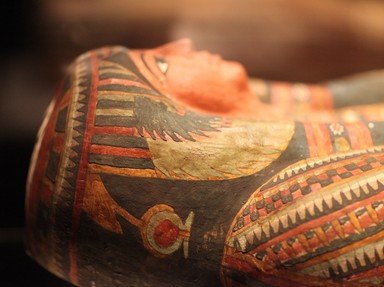Quiz Answer Key and Fun Facts
1. "The Enemy" Monotheism Amarna Period
2. Co-Regent Battle of Megiddo Military Expeditions
3. The Great Battle of Kadesh Abu Simbel
4. Expedition to Punt Funerary Temple False Beard
5. Living Image of Aton Howard Carter Funeral Mask
6. Cheops "Smasher of Foreheads" Great Pyramid
7. Narmer Unified Upper and Lower Egypt Memphis
8. Greek Carpet Caesarion
9. Fourth Dynasty Bent Pyramid of Dashur Raids to Nubia
10. The Magnificent Memorial Scarabs The Colossi of Memnon
Source: Author
ponycargirl
This quiz was reviewed by FunTrivia editor
bloomsby before going online.
Any errors found in FunTrivia content are routinely corrected through our feedback system.

